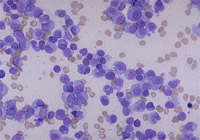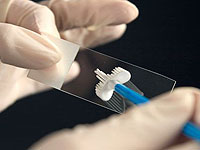The treatment of lymphoma depends on the variant of the lesion of the lymphatic system and the degree of expression of the defeat. The main method of treating the disease is chemotherapy. According to the testimony, the bone marrow transplantation is carried out.
Content
Variants of treatment of lymphoma
The choice of treatment program depends on the type of lymphoma and the state of the patient.
Indolent lymphomas (lymphomas having a slow and favorable current) in some cases may not require treatment sufficient to observe the doctor (hematologist or oncologist). However, the emergence of the first signs of the progression of the disease (increasing lymph nodes, increased weakness, increase body temperature, etc.) are a signal to start treatment.
During the locally common stages, radiotherapy is often used - irradiation of the lymph nodes affected by the tumor. In generalized (common) stages, preference gives chemotherapy. The spectrum of possible drugs for the treatment of indolet lymphomas is quite large - chlorubutin, fludarabine, cyclophosphane, vincristine, rituximab, etc. Indolent lymphoma belong to diseases, the total seraction of which today seems unlikely. The main purpose of the treatment of indolent lymphomes is considering an increase in duration and improving the quality of life of the patient.
Aggressive lymphomas typically require immediate origin. One of the most common chemotherapy programs is the program using monoclonal antibody rituximab.
Highly aggressive lymphomas are treated according to chemotherapy programs for sharp lymphoblastic leukemias or similar to them. The purpose of the treatment of aggressive and highly aggressive lymphoma is the cure. However, it is possible not in all cases.
One of the effective programs for the treatment of aggressive and highly aggressive lymphoma is high-quality chemotherapy with blood-forming stem cell transplantation.
Treatment of lymphogranulumatosis (Hodgkin lymphoma)
 Regardless of the morphological option and the stage of lymphogranulomosis, the ultimate goal of therapy is tooling the disease. At the first and second stages of the disease, the probability of cure is very high, but also with far-seated stages adequate treatment has good chances of success. Treatment at this stage can be carried out by radiation therapy methods in combination with chemotherapy.
Regardless of the morphological option and the stage of lymphogranulomosis, the ultimate goal of therapy is tooling the disease. At the first and second stages of the disease, the probability of cure is very high, but also with far-seated stages adequate treatment has good chances of success. Treatment at this stage can be carried out by radiation therapy methods in combination with chemotherapy.
With common stages of the disease, 6-8 standard chemotherapy cycles are carried out. With an unfavorable flow of lymphogranuluitosis, the effective method of treatment is highly visible chemotherapy with autologous bone marrow transplantation.
The choice of treatment method is a step of making a very important solution, which should be based on accurate data relating to the diagnosis of the disease, taking into account the individual characteristics of the patient. Discussion of treatment issues with patients and, at wishes, with its loved ones is an integral element of approval of a common treatment program.









